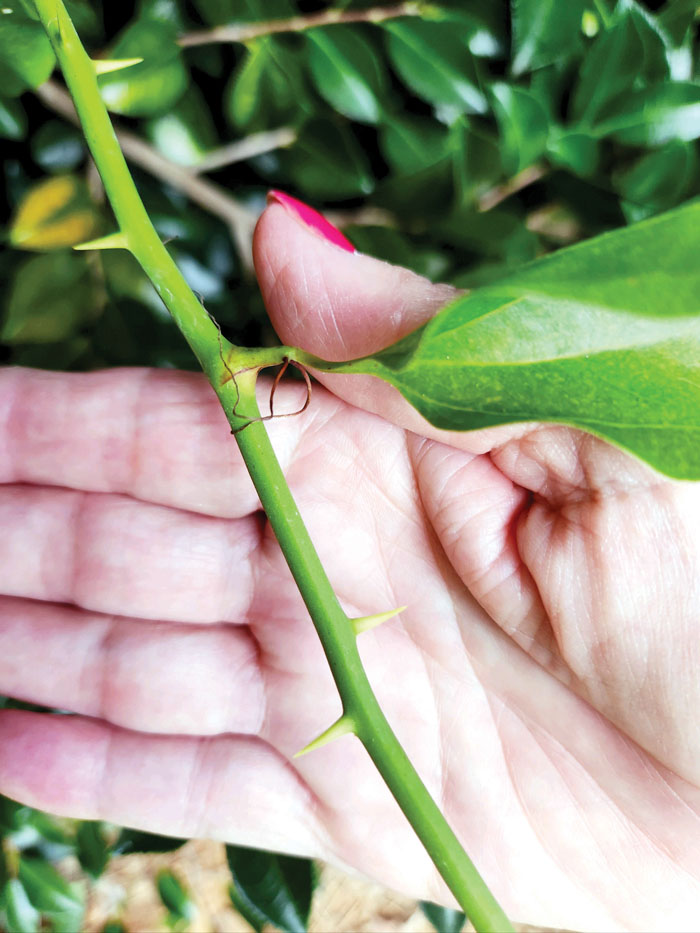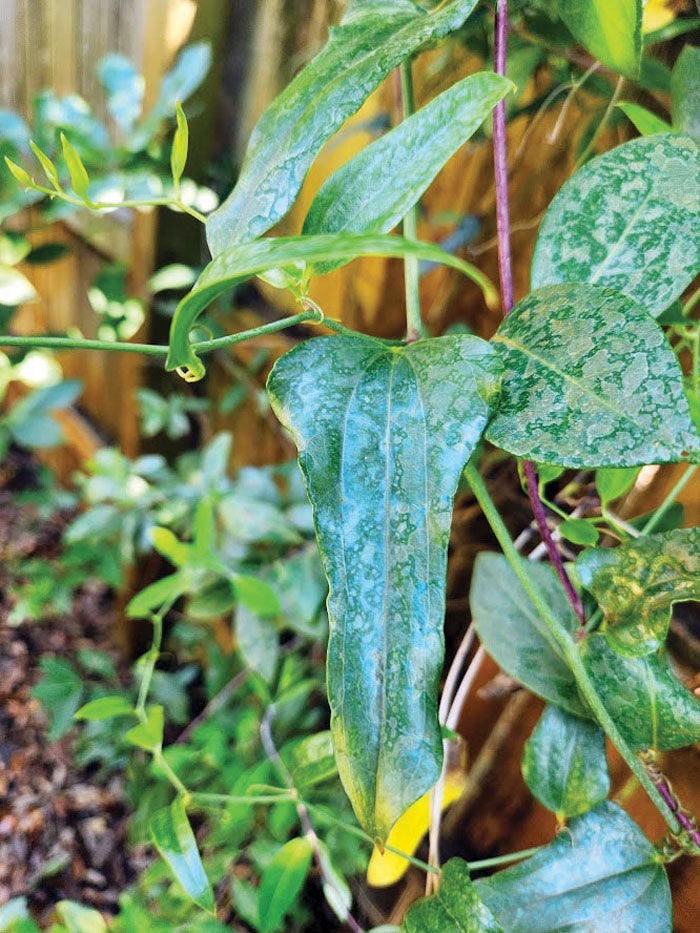Darrell Blackwelder: Smilax is a tough vine
Published 12:00 am Saturday, August 12, 2023
Every time I work on my hedges or shrubs, I often wind up with briar cuts on my fingers, ankles and arms. There’s always a shiny green vine with razor-sharp thorns blended in the foliage and limbs of the shrubs. The culprit is smilax or commonly known as greenbrier, catbriers, hog briers or deer thorns. These vines are native to North America, but there are over 300 species worldwide. Plant breeders have even cultivated flowering varieties of the vine for the landscape.
This vine is usually found in forests or fields and can reach height of 20 feet or more twining around trees and shrubs or it can sprawl about on the ground. The plant reproduces mainly by underground rhizomes growing in about any type of soil.
Pulling the vine out of the soil is quite difficult because its roots are very thick and tough. These vines do not produce self-fertile flowers, so male and female flowers on separate plants must be nearby to produce viable seed. Female vines produce small, blue or black fruit in small clusters. Birds and other wildlife spread the seed.
The vines themselves are annoying because of their constant growth and difficulty of control, however, the thorns are extremely sharp and hard. They are about ½ inch long growing on the stems and under the flowers of species. While there are some species that are thornless, many have these thorns which can be a royal pain. Pruning the vine back into the shrubs will not kill it. Digging up and removing the rhizomes or tubers is the best method of control, but this technique is most difficult when growing among shrubs. If possible, unwind the vine, lay it flat on the ground and spray with Roundup. Go to https://hgic.clemson.edu/factsheet/smilax-greenbrier/ for more detailed information.
Darrell Blackwelder is the retired horticulture agent and director with the North Carolina Cooperative Extension Service in Rowan County. Contact him at deblackw@ncsu.edu.




